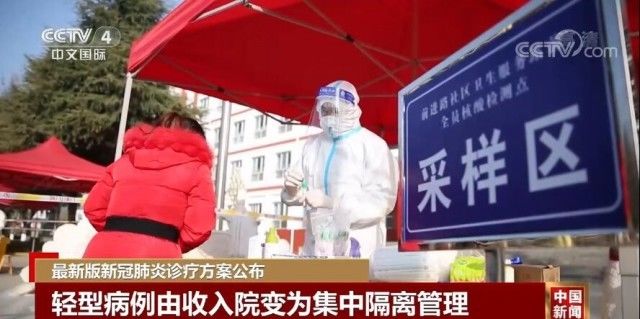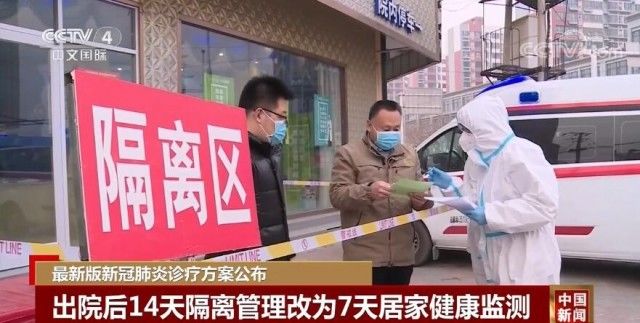CCTV News: On March 15, the National Health Commission and the State Administration of Traditional Chinese Medicine released the “New Coronary Virus Pneumonia Diagnosis and Treatment Program (Trial Version 9)”. The new version of the diagnosis and treatment plan has made several major updates in detection, management and treatment, optimized case discovery and reporting procedures, added antigen detection as a supplement, and further improved the ability to detect early cases. At the same time, cases were classified and treated, and mild cases were changed from hospital admission to centralized isolation management.
The diagnosis and treatment plan further improves the case classification and treatment measures

In terms of case admission, the new version of the diagnosis and treatment plan is based on the reports in various places that “patients with Omicron variant strains are mainly asymptomatic infections and mild cases, most of them do not require excessive treatment, and all admission to designated hospitals will take up a lot of Medical resources” and other opinions, and further improved the classification and treatment measures for cases.
Light cases changed from admission to centralized isolation management
For confirmed cases, the new version of the plan has re-clinical classification, divided into light, ordinary, severe and critical. Mild cases are subject to centralized isolation management, and relevant centralized isolation places cannot isolate inbound personnel, close contacts and other groups at the same time. During the isolation management period, symptomatic treatment and condition monitoring should be done. If the condition worsens, it should be transferred to a designated hospital for treatment.

Under the current situation that asymptomatic and mild cases account for the majority, the case classification and admission measures of the new version of the diagnosis and treatment plan are expected to reduce the burden of treatment on designated hospitals and medical staff, reduce the risk of running on medical resources, and achieve more accurate management. In addition, common, severe, critical cases and cases with severe high-risk factors should be centrally treated in designated hospitals, and severe and critical cases should be admitted to ICU for treatment as soon as possible.
New two new anti-coronavirus drugs
In terms of specific drug treatment, the new version of the diagnosis and treatment plan has added two new coronavirus antiviral drugs newly approved by the State Food and Drug Administration. The content of TCM treatment was revised and improved. Combined with the clinical treatment experience in various places, the application of non-drug therapy of traditional Chinese medicine was strengthened, and the content of acupuncture and moxibustion treatment was added; combined with the characteristics of children, the content of traditional Chinese medicine for children was added.
The plan also adjusts the management of release from isolation, discharge standards, as well as the management of release from isolation and precautions after discharge. For example, “continue to carry out 14-day isolation management and health monitoring after discharge from hospital” is revised to “continue to carry out 7-day home health monitoring after release of isolation management or discharge from hospital”.

Antigen detection is added on the basis of nucleic acid as a supplement
The plan proposes that on the basis of nucleic acid detection, antigen detection should be added as a supplement to further improve the ability of early detection of cases. The relevant person in charge of the National Health and Health Commission emphasized that antigen positive must be connected to nucleic acid testing in a closed loop. Antigen positive results can be used for early triage and rapid management of suspected populations, and cannot replace nucleic acid testing to determine whether the tested person is infected with the new crown.
Li Jinming, deputy director of the National Health Commission’s Clinical Laboratory Center: The specificity of antigen detection can reach 99%, but the specificity of nucleic acid detection method is 100%. Therefore, nucleic acid testing has always been a basis and a “gold standard” for determining new crown infection, so antigen testing cannot replace nucleic acid testing. When the antigen test is positive, the nucleic acid test must be used for confirmation; but if the nucleic acid test is positive, no matter whether your antigen test is negative or positive, the subject must be treated as a new crown infection or a confirmed patient to take measures.